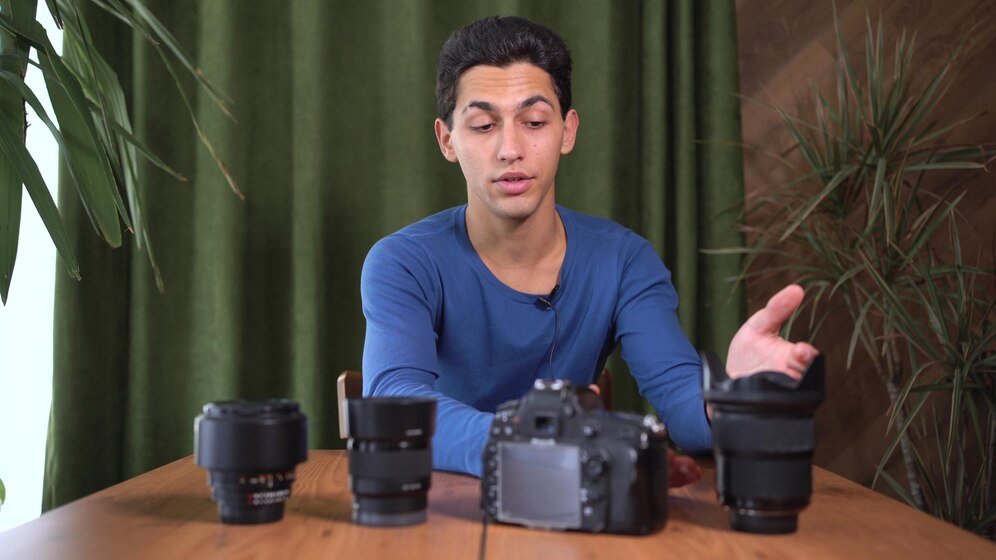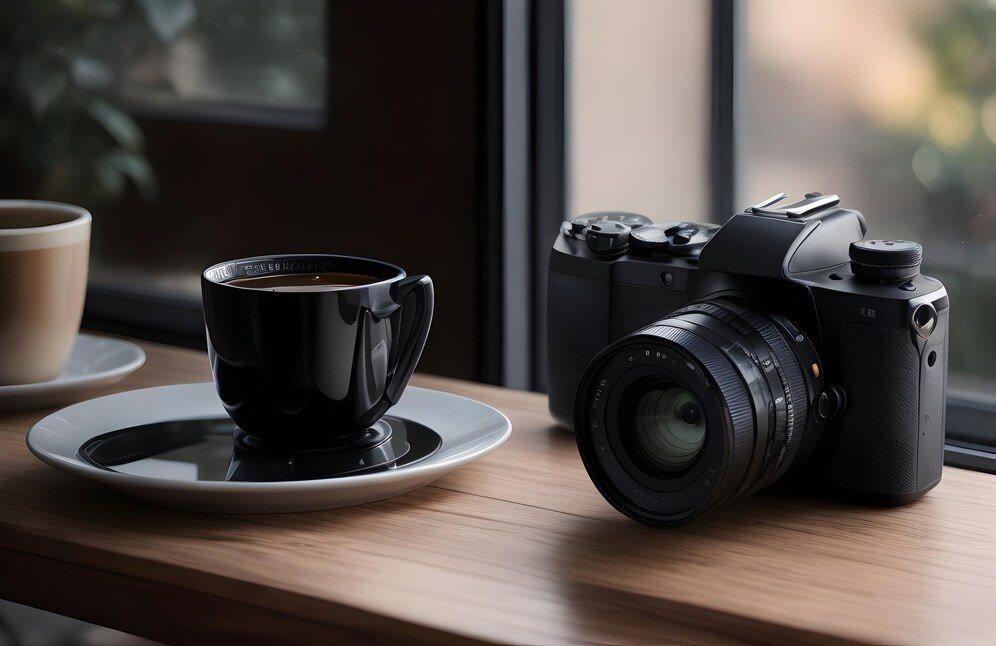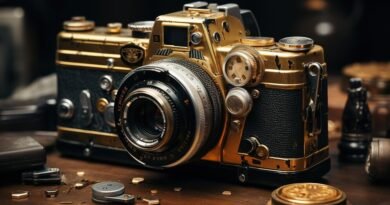What is a DSLR Camera? A Comprehensive Guide
Introduction
In the current digital era, cameras are widely used and record moments with previously unheard-of clarity and detail. The DSLR (Digital Single-Lens Reflex) camera is a popular choice among both novice and experienced photographers among the many different kinds of cameras that are available. However, what is a DSLR camera exactly, and why is it so widely used? This blog post delves deeply into the world of DSLR cameras, examining its special qualities, advantages, and the reasons behind their continued dominance in the photographic industry.
Problem: The Challenge of Capturing High-Quality Images

One problem that photography enthusiasts frequently have is taking excellent pictures that accurately depict the subject in front of them. Although handy, smartphone cameras frequently don’t produce good-quality images, especially in low light or when a great degree of detail is needed. Even while they are superior to smartphones, point-and-shoot cameras still don’t offer the control and versatility that serious photographers desire. The issue is evident: there is a need in the market for a camera that can produce images on par with professional equipment yet doesn’t require a degree in photography to use.
Agitation: The Frustration of Inadequate Equipment
Consider the following situation: You’re experiencing an experience of a lifetime as you take in the stunning sunset over the mountains. When you take out your smartphone to record the moment, the picture that appears is very different from what your eyes actually see. The picture as a whole falls short of capturing the scene’s grandeur because the colors are washed out and the details are unclear. Or maybe you’re trying to take candid pictures at a family reunion but your point-and-shoot camera is having trouble with the dim interior lighting, so your pictures come out grainy and fuzzy.
Photography aficionados are all too familiar with these issues. It can be depressing to not be able to take pictures that adequately depict the event. Photographs are, after all, more than simply images; they are snapshots of memories preserved in time. It can seem like you’re losing out on capturing those moments in all of their splendor when your equipment fails you.
Solution: Enter the DSLR Camera
The DSLR camera is useful in this situation. DSLR cameras have become the preferred option for everyone who is serious about photography. They were created to fill the gap between the high-quality output of professional-grade equipment and the ease of use of a point-and-shoot.
Understanding the DSLR Camera: A Technical Breakdown

It’s critical to comprehend how a DSLR camera functions in order to fully enjoy its advantages. A DSLR camera’s primary method of reflecting light from the lens upward into an optical viewfinder is via a mirror system. DSLRs differ from other kinds of digital cameras, such mirrorless versions, in this way.
How a DSLR Works
- Light Entry: When you press the shutter button on a DSLR camera, light enters through the lens.
- Mirror Mechanism: The light hits a mirror inside the camera, which reflects it up into the viewfinder. This allows you to see exactly what the lens is seeing, making composition more accurate.
- Shutter Release: When you press the shutter button fully, the mirror flips up, the shutter opens, and light hits the camera’s sensor, capturing the image.
- Image Processing: The sensor converts the light into a digital signal, which is then processed by the camera’s internal image processor and stored on the memory card.
The DSLR’s moniker, Digital Single-Lens Reflex, highlights the way it employs a reflex mirror and a single lens to collect photographs. This mirror and shutter mechanism is what gives the DSLR its name.
The Features That Make DSLR Cameras Stand Out
After discussing the fundamentals, let’s examine the characteristics that make DSLR cameras the go-to option for many photographers.
1. Interchangeable Lenses
The ability to swap out lenses is one of a DSLR camera’s biggest benefits. Just this feature creates a plethora of opportunities for photographers, enabling them to employ a broad range of lenses designed for various shooting scenarios. A DSLR can handle many types of lenses, including wide-angle lenses for landscapes, macro lenses for up-close photos, and telephoto lenses for far-off subjects.
2. Superior Image Quality
The picture sensors in DSLR cameras are larger than those in point-and-shoot cameras and cellphones. This enables them to take in more light, which improves the clarity of the images, particularly in low light. In addition, the larger sensor results in a shorter depth of field, which gives photographers the much sought-after “bokeh” effect—a gorgeously blurred background behind a sharply focused subject.
3. Manual Controls
DSLR cameras come with a number of manual settings for photographers who want complete control over their shots. Aperture, shutter speed, ISO, and focus can all be changed to meet your needs. This degree of control is essential when taking pictures in difficult lighting situations or when aiming for a particular creative look.
4. Optical Viewfinder
DSLRs have an optical viewfinder that displays a direct optical image from the camera’s lens, in contrast to mirrorless cameras. This provides photographers with a real-time view of their subject because there is no lag or delay. This is especially helpful for photographing subjects that move quickly, like sports or animals.
5. Durability and Ergonomics
DSLR cameras are more resilient and able to tolerate adverse situations because they are frequently constructed with sturdy materials. They also have an ergonomic design that makes it easy to reach controls and has comfortable grips, making it comfortable for photographers to shoot for extended periods of time.
Real-World Case Study: The Canon EOS 5D Mark IV
Let’s examine the Canon EOS 5D Mark IV, a camera that has become a standard for professional photographers, in order to demonstrate the practical applications of a DSLR camera.
Background
A member of Canon’s acclaimed 5D series, which is praised for its remarkable image quality and adaptability, is the Canon EOS 5D Mark IV. When it was released in 2016, it immediately became popular for all kinds of photography, including landscape and wedding photography.
The Challenge
Sarah Jones, a professional photographer, had the difficult challenge of documenting a well-known wedding in an isolated area with erratic lighting. The wedding took place in the golden hour, and the reception was held in a darkly lit auditorium. The site featured both outdoor and indoor settings.
The Solution
Sarah selected the Canon EOS 5D Mark IV due to its amazing ISO range, full-frame sensor, and 30.4 megapixel resolution. She made her choice based in large part on how well the camera performed in low light.
The Result
The photos that were taken were just breathtaking. While the inside images kept their sharpness and clarity in spite of the poor light, the outdoor golden hour shots highlighted the vivid colors and minute details. Sarah was able to precisely catch the highlights and shadows because to the camera’s dynamic range, producing a finished product that is both well-balanced and aesthetically pleasing.
Conclusion
Sarah’s use of the Canon EOS 5D Mark IV demonstrates the capability and adaptability of a DSLR camera. When shooting in difficult lighting situations or having to capture subjects in motion, a DSLR such as the Canon EOS 5D Mark IV can reliably provide images with excellent quality.
Why DSLR Cameras Remain Relevant in a Mirrorless World

Some may be wondering if DSLR cameras are going out of style given the popularity of mirrorless cameras. DSLR cameras are still in demand for a number of reasons, despite mirrorless cameras having certain benefits such being lighter and smaller.
1. Optical Viewfinder
As was previously said, many photographers prefer the real-time, lag-free perspective of the scene that an optical viewfinder on a DSLR offers over an electronic viewfinder. This is especially significant for action photography, as precise timing down to the last second is essential.
2. Battery Life
When compared to mirrorless cameras, DSLR cameras often have longer battery lives. This is so they are not dependent on an electronic viewfinder that quickly depletes the battery. This can be a big benefit for photographers who shoot for long stretches of time or don’t have simple access to electricity.
3. Lens Compatibility
Since DSLR cameras have been around for many years, a wide variety of lenses are available. Since many photographers have already invested in DSLR lenses, switching to a mirrorless setup would need paying more money for new lenses or adapters.
4. Proven Track Record
The performance and dependability of DSLR cameras are well-established. Their versatility in professional settings—from sports photography to photojournalism—has been demonstrated, and they have proven to be effective under duress.
Choosing the Right DSLR Camera for Your Needs
Selecting the appropriate model of DSLR camera is the following step if you’ve come to the conclusion that it’s the best option for you. Here are a few things to think about when choosing.
1. Purpose
Consider your main purpose for using the camera. Seek for a DSLR with a full-frame sensor and a decent assortment of prime lenses if you enjoy taking portraits. Think about getting a camera with a quick burst rate and strong autofocus for taking pictures of animals or sports.
2. Budget
DSLR cameras range in price from high-end professional cameras to entry-level ones. Ascertain your spending limit and select a camera that provides the most functions within your budget. Keep in mind that you’ll also need to set aside money for accessories and lenses.
3. Brand Ecosystem
Various brands provide varying ecosystems of lenses, add-ons, and customer service. The most well-known brands are Sony, Canon, and Nikon; each has a sizable user base and a broad selection of lenses. Think about the ecology of the brand that best meets your needs.
4. Future-Proofing
DSLRs are a wise purchase, but think about how you might want to develop as a photographer. Choose a camera with the functions you require right now, along with the adaptability to add extras later on, such video recording or sophisticated autofocus systems.
Conclusion: The Enduring Appeal of DSLR Cameras
The DSLR camera is still a potent tool for photographers who seek quality, variety, and control in a world where technology is always changing. DSLR cameras offer a tried-and-true solution to the difficulties of taking high-quality pictures, regardless of your level of experience with photography—whether you’re a novice hoping to advance or an experienced pro looking for a dependable workhorse.
Anybody who is serious about photography should invest in a DSLR camera because of its many features, including optical viewfinder, manual settings, interchangeable lenses, and excellent image quality. Even while mirrorless cameras are becoming more and more popular, the DSLR’s enduring characteristics and track record guarantee that it will be a mainstay in the photography industry for years to come.
Therefore, if you’re sick and weary of passing up the ideal snap, it might be time to consider enhancing your photographic arsenal with a DSLR camera. Possessing the ideal DSLR will enable you to take breathtaking pictures that accurately portray the moments you wish to cherish.




